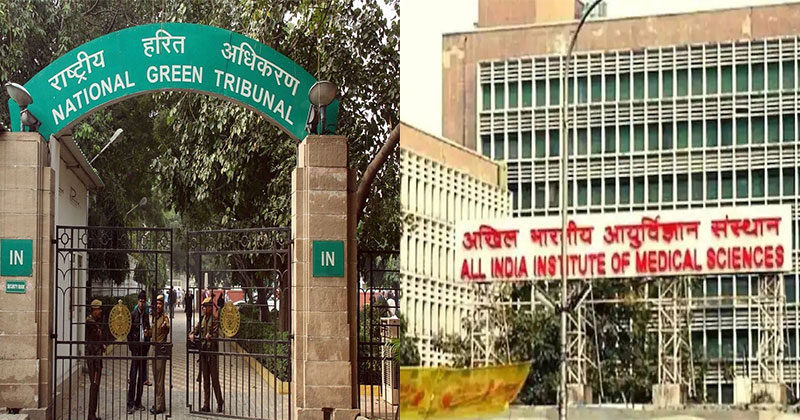The National Green Tribunal (NGT) has directed the Ministry of Environment, Forest and Climate Change (MoEF&CC) to take a call on Expert Committee’s recommendations to include slaughterhouses and meat processing under Environmental Impact Assessment Notification, 2006 within two months.
The NGT stated, “We further direct that if no decision is taken by MoEF&CC within two months as directed above, the requirement for EC will apply to all large slaughter houses as per classification in the ‘Revised Comprehensive Industry Document on Slaughter Houses’ i.e. “Large: More than 200 large animal i.e. bovines per day, or more than 1000 small animal i.e. goat and sheep per day (any day in a week)” with effect from 01.08.2023.”
“Thereafter, no ‘Large’ slaughter house can be established or expanded without EIA as per procedure applicable to B category project in terms of EIA Notification dated 14.9.2006. This direction is being issued under Section 15 of the NGT Act. The Tribunal may consider such directions in respect of medium slaughter houses on the next date,” the NGT added.
The NGT was hearing an application raising concerns about inadequacy of environmental regulatory framework to evaluate and remedy adverse impact of slaughter house activities inspite of recommendations of Expert Committee of the MoEF&CC on the subject.
The applicant submitted that slaughter houses and allied activities adversely affect the environment on account of over consumption of water, improper solid waste disposal, spread of Zoonotic diseases and obnoxious emissions causing air pollution and contributing to climate change.
Furthermore, the applicant submitted that “as per ‘Revised classification of industrial Sectors under Red, Orange, Green and White categories report published by CPCB in 2016’, slaughter houses are ‘red’ category industries due to their adverse impact on environment.”
The applicant contended, “Thus, a well- managed slaughterhouse must have facility for animal holding, lairage, abattoir, chilling room, process hall, freezing rooms. In the chilling room, carcasses are stored in 7oC and in the freezing tunnel, products are free zed in -40oC. The packed meat products are stored in cold storage at -20oC until products are dispatched. All these cooling processes and equipment consume a lot of electricity and emit heat into the atmosphere, which contribute to the global warming. Emissions from slaughterhouses are from the freezing plants and the CO2 is from the stunning equipment. Dietary processes of livestock include methane rich contents.”
“Wastewater generated from slaughterhouses/processing units contains large amount of suspended solids, including fat organic materials, which release methane, nitrate and carbon dioxide, both major contributors to climate change. Standards for discharge of effluents from slaughter houses are mentioned in the Notification dated 28.10.2016 and included in Schedule I to the EPA Rules,” added the applicant.
The MoEF&CC submitted that the “requirement of EC already exists for construction projects more than 20,000 sq. mtrs. which includes slaughter houses. CPCB is empowered to take measures to control water and air pollution and has already issued order dated 23.10.2017 for measures to be adopted by the slaughter houses. MoEF&CC has fixed standards for slaughter houses vide notification dated 28.10.2016.”
The NGT noted, “the issue for consideration is whether any change in environmental regulatory regime is required.” Furthermore, the NGT noted, “CPCB study ‘Revised Comprehensive Industry Document on Slaughter Houses’, quoted above, brings out succinctly adverse environmental impact which need evaluation and safeguards consistent with sustainable development and precautionary principles which have been held to be part of right to life under Article 21.”
Furthermore, the NGT said, “In their response, MoEF&CC and CPCB have not disputed impact assessment but stated that the same is taking place while evaluating a construction project. However, we are unable to accept this stand as the said process does not consider impact of slaughter house.”
The NGT held, “We are, thus, satisfied that MoEF&CC needs to take a call on the recommendations of the Expert Committee headed by Dr. S.R. Wate in the light of its minutes dated 02.05.2017 within two months from today. Any stakeholders interested on the issue will be free to represent their viewpoint to the Secretary, MoEF&CC within two weeks from today.”
Shreeyash Mittal is a lawyer based in Delhi, working as a Senior Associate (Corporate Law) at K&Co. Advocates & Legal Consultants in Noida. He graduated from Jindal Global Law School with honors, receiving awards for his outstanding contributions and leadership. Shreeyash is passionate about using new technologies to help clear the backlog of legal cases in India.
























Comments